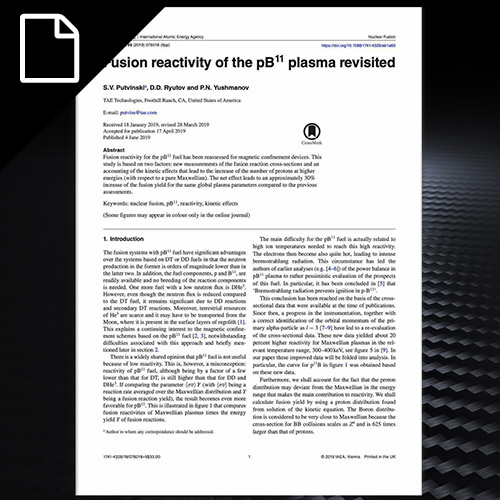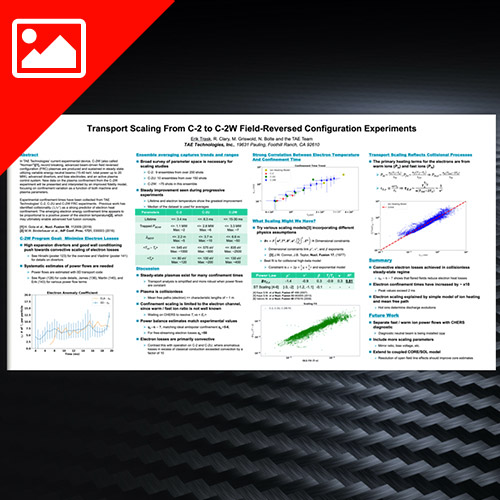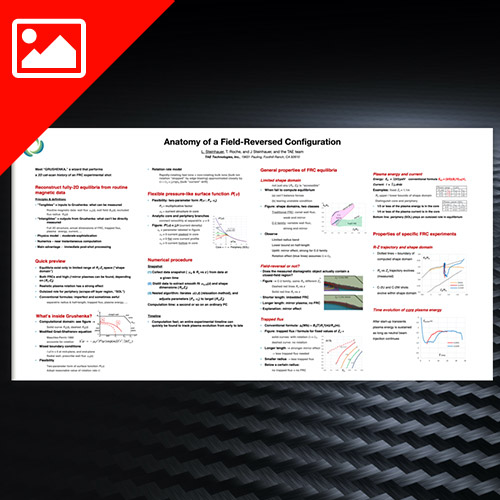
Reduced MHD model and simulations for advanced plasma control
November 2020 | S. Galkin | APS-DPP | Presentation
Motivation and requirements
• Reduced MHD model
• Domain discretization
• Simulation Bandwidth control
• Time integration scheme

November 2020 | S. Galkin | APS-DPP | Presentation
Motivation and requirements
• Reduced MHD model
• Domain discretization
• Simulation Bandwidth control
• Time integration scheme

November 2020 | B. Nicks | APS-DPP | Poster
Can FRCs (field-reversed configurations) be shown to be a preferred state of plasma under certain conditions?
November 2020 | B.S. Nicks | Nuclear Fusion | Paper
In the scrape-off-layer (SOL) of a field-reversed configuration, neutral beam injection can drive
modes in the vicinity of the ion-cyclotron frequency

October 2019 | Erik Trask | APS-DPP | Poster
In TAE Technologies’ current experimental device, C-2W (also called “Norman”)[1], record breaking, advanced beam-driven field reversed configuration (FRC)

October 2019 | L. Steinhauer | APS-DPP | Poster
Tangibles” = inputs to Grushenka: what can be measured. Intangibles” = outputs from Grushenka: what can’t be directlymeasured